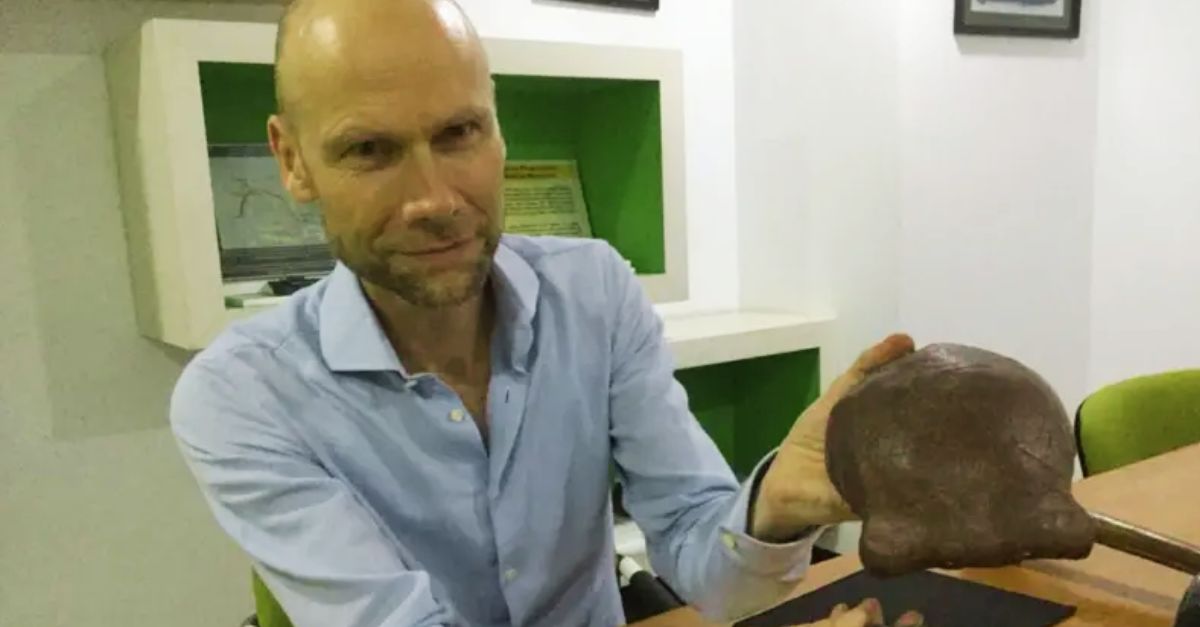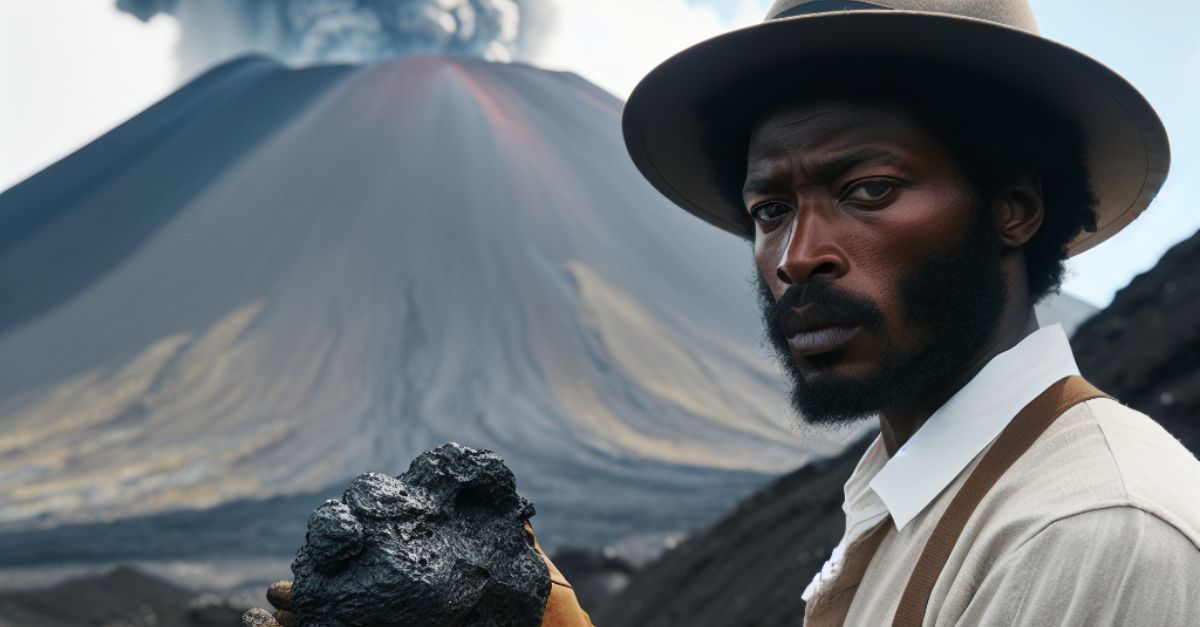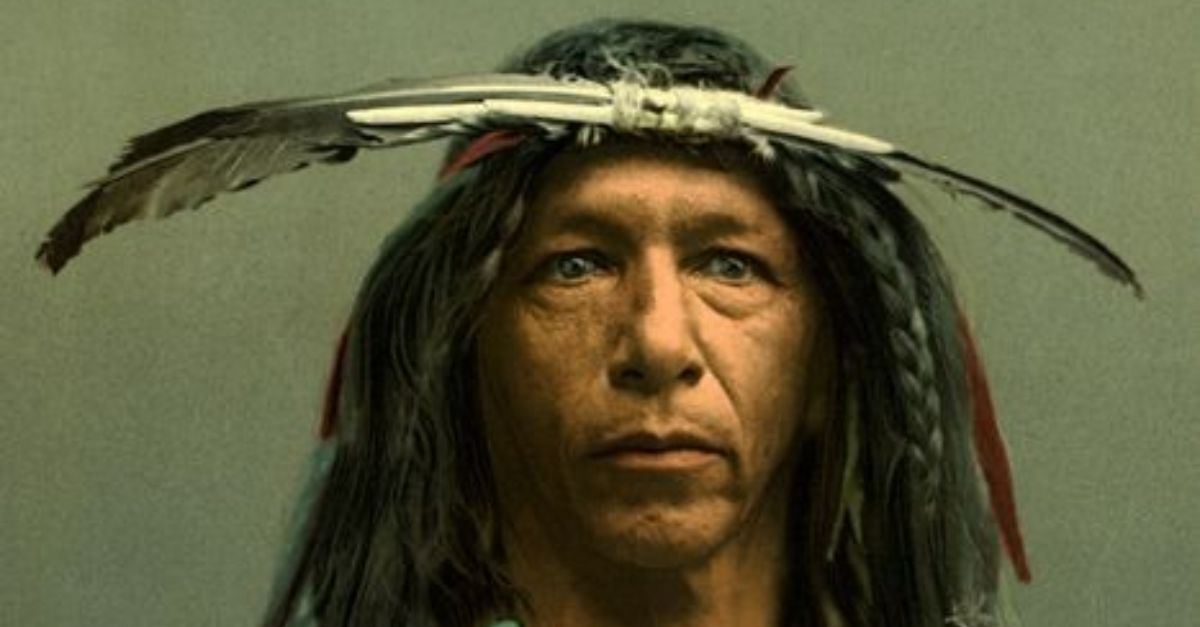Dig, And You Shall Find
Researchers explored the depths of the Madura Strait, a waterway between two Indonesian islands, in 2011, and what they found was indeed awaiting their arrival.

They Were Digging Up The Madura Strait For Sand
The Madura Strait was targeted for marine sand mining due to its rich sediment deposits, which were essential for construction projects in nearby cities like Surabaya. The strait’s shallow seabed made extraction easier as it could provide a steady supply of sand for infrastructure development.
 Unknown authorUnknown author, Wikimedia Commons
Unknown authorUnknown author, Wikimedia Commons
Why Not Elsewhere?
Other regions lacked the ideal sediment composition found in the Madura Strait, where river systems had historically deposited layers of sand and organic material. The Solo River, which once flowed through Sundaland, left behind dense, fossil-rich deposits, and this detail alone made the location uniquely suited for mining.
 Crisco 1492, Wikimedia Commons
Crisco 1492, Wikimedia Commons
This Find Was Accidental
The original intention was clearly not to search for archaeological remains; heck, it was not even archaeologists doing the digging, but miners. The miners were seeking sand by digging up the seafloor. This sand was to be used to support construction projects.
 Lost City Found 140,000 Year Old Ocean by URBAN BLOOM
Lost City Found 140,000 Year Old Ocean by URBAN BLOOM
It Was From This Find That Everything Unfolded
Immediately, the miners had to hand over the tools to the archaeologists. Over the following decade, experts meticulously analyzed the site, using advanced dating techniques and geological studies to piece together the mystery of this lost world.
The Biggest Find Was A 140,000-Year-Old Skull
The skull’s estimated age of 140,000 years places it within a vital period of human evolution, possibly shedding light on ancient migrations and survival strategies in Sundaland, a vast prehistoric landmass that was submerged during the last Ice Age.
 Lost City Found 140,000 Year Old Ocean by URBAN BLOOM
Lost City Found 140,000 Year Old Ocean by URBAN BLOOM
They Found An Additional 6,000 Fossils
The discovery was not an isolated find—alongside it were 6,000 fossils from 36 different species. Some of these remains bore cut marks, hinting at early human hunting practices and tool usage. This had just become more interesting, it appears.
What Species Did These Fossils Belong To?
First up, they found the Komodo dragon’s fossils. Komodo dragons are apex predators, capable of taking down large prey with their powerful bite and venom-laced saliva. The fossils indicate that Sundaland’s ecosystem supported these massive reptiles, likely alongside early humans.
 Charles J. Sharp, Wikimedia Commons
Charles J. Sharp, Wikimedia Commons
They Also Found Buffalo Fossils
These large herbivores likely thrived in open grasslands and wooded areas, serving as a valuable food source for Homo erectus and other early human groups. Some buffalo fossils bore cut marks, indicating that early humans hunted and butchered them using primitive tools.
 Timothy Akolamazima, Wikimedia Commons
Timothy Akolamazima, Wikimedia Commons
Deer Fossils Were Present, Too
Early humans likely depended on deer for food and materials, as their hides and bones could be fashioned into tools, weapons, and clothing. Cut marks on some deer fossils confirm butchering practices, illustrating how ancient humans processed the meat after a successful hunt.
 derivative work: Massimo Catarinella (talk)
Red_deer_stag.jpg: Mehmet Karatay, Wikimedia Commons
derivative work: Massimo Catarinella (talk)
Red_deer_stag.jpg: Mehmet Karatay, Wikimedia Commons
Elephant Fossils Were Found As Well
Elephants might have taken the role of clearing vegetation for smaller species. Their size and strength made them a challenge and an opportunity for early human hunters. Most of these animals were land animals, so how did their fossils end up underwater? Well, a detour into climate change calls.
Climate And Terrain Of Ancient Sundaland
Sundaland once thrived as a vast landmass, connecting parts of Southeast Asia with a warm, humid climate that was perfect for supporting diverse ecosystems. Slightly cooler than today’s tropics, it experienced seasonal monsoons that shaped wildlife migration and human survival strategies.
 Lost World Rising: 140,000-Year-Old City Found Beneath the Ocean? By Club Paranormal (Truth Be Told)
Lost World Rising: 140,000-Year-Old City Found Beneath the Ocean? By Club Paranormal (Truth Be Told)
Forests And Grasslands
Thick tropical forests covered much of Sundaland to provide ample food and shelter for species such as elephants, deer, and Komodo dragons. Open grasslands, situated beyond these forests, allowed grazing animals like buffalo to flourish.
 ConservationIntl, CC BY-SA 4.0, Wikimedia Commons
ConservationIntl, CC BY-SA 4.0, Wikimedia Commons
Rivers And Lakes
Freshwater rivers and lakes crisscrossed this zone, and they provided drinking water for animals and supported human communities. These waterways supported life. However, as global temperatures shifted, these same water sources would become pivotal in the land’s eventual disappearance.
Seasonal Monsoons And Climate Change
Monsoon cycles shaped Sundaland’s ecosystems and influenced migration patterns and food availability. Seasonal rains replenished the forests and rivers, maintaining a stable environment. However, soon enough, Earth’s climate shifted, and glaciers began to melt, altering rainfall patterns and increasing ocean levels.
Geological And Climatic Shifts
Over millennia, tectonic movements and global warming at the end of the Ice Age caused irreversible changes. As polar ice caps melted, seawater surged, submerging coastal areas first before swallowing vast stretches of inland terrain. What was once sprawling grasslands and rainforests slowly transformed into ocean beds.
 Rita Willaert, Wikimedia Commons
Rita Willaert, Wikimedia Commons
The Submersion Of Sundaland
Between 14,000 and 7,000 years ago, rising ocean levels gradually engulfed Sundaland. Human populations migrated inland, while land animals either adapted to new environments or faced extinction. Some stranded species may have swum or traveled to higher ground, while others, like Komodo dragons, survived on isolated islands.
 Sundaland during Ice Age and Early Human Migration by GeoNomad
Sundaland during Ice Age and Early Human Migration by GeoNomad
Preserved Fossils Beneath The Waves
As Sundaland disappeared, sediments buried animal remains to preserve them beneath the ocean floor. This explains why species like elephants and buffalo, once land-dwellers, were found underwater. Their fossils remained protected in layers of silt, providing rare insight into life before the flooding.
 Lost City Found 140,000 Year Old Ocean by URBAN BLOOM
Lost City Found 140,000 Year Old Ocean by URBAN BLOOM
Why Did Miners Pass The Mantle To Archaeologists?
Miners often uncover unexpected historical remains, but interpreting them requires archaeologists trained in excavation, dating techniques, and preservation methods. Archaeologists ensure that discoveries are correctly documented and studied to prevent damage or loss of valuable relics that could reshape our understanding of ancient civilizations.
 Lost City Found 140,000 Year Old Ocean by URBAN BLOOM
Lost City Found 140,000 Year Old Ocean by URBAN BLOOM
Why History Takes Precedence Over Construction
Historical discoveries provide irreplaceable insights into humanity’s past, shaping our understanding of civilizations, migrations, culture, and evolution. Unlike construction, which can be adjusted or relocated, archaeological sites often contain fragile artifacts and organic remains that, once disturbed or destroyed, can never be recovered or appropriately studied.
 Lost World Rising: 140,000-Year-Old City Found Beneath the Ocean? By Club Paranormal (Truth Be Told)
Lost World Rising: 140,000-Year-Old City Found Beneath the Ocean? By Club Paranormal (Truth Be Told)
Who Led The Discovery?
Harold Berghuis, an archaeologist from Leiden University, led the excavation. Berghuis specializes in prehistoric human migration and submerged terrains, making him a key figure in interpreting the significance of the findings. His expertise in optically stimulated luminescence (OSL) dating helped confirm the age of the fossils.
 Hansmuller UBL, Wikimedia Commons
Hansmuller UBL, Wikimedia Commons
Which Institutions Were Involved?
The discovery was a collaborative effort involving multiple institutions across different countries. Researchers from Leiden University (Netherlands), the University of Twente (Netherlands), the Indonesian Geological Survey Center, Griffith University (Australia), and specialists from Germany and Japan contributed to the study. Their combined expertise was in archaeology, geology, and paleoanthropology.
 Hansmuller UBL, Wikimedia Commons
Hansmuller UBL, Wikimedia Commons
Where Are The Fossils Today?
The fossils, including the Homo erectus skull fragments and remains of 36 vertebrate species, are currently housed in the Geological Museum in Bandung, Indonesia. This museum serves as a research hub for studying prehistoric life in Southeast Asia.
Significance Of This Find
This marks a rare instance of physical evidence confirming the existence of Sundaland, a legendary submerged landmass thought to have once connected much of Southeast Asia. Its disappearance remains one of history’s greatest geological transformations.
Sundaland Today
Although much of Sundaland is underwater, remnants of its ancient land still survive in modern Indonesia, Malaysia, and Thailand. The islands that remain—such as Sumatra, Java, and Borneo—were once part of a vast, continuous land bridge that supported thriving ecosystems and early human settlements.
 Sundaland Unearthed: The Lost Continent Of Southeast Asia by Facetory
Sundaland Unearthed: The Lost Continent Of Southeast Asia by Facetory
Preserving The Past For Future Knowledge
You know what you know archeologically because someone somewhere took the time to stop construction and switch into history detective mode. While infrastructure is vital, history offers a foundation for identity. Unearthing lost worlds, such as Sundaland, allows researchers to reconstruct life from the past and influence present-day life.
 Lost World Rising: 140,000-Year-Old City Found Beneath the Ocean? by Club Paranormal (Truth Be Told)
Lost World Rising: 140,000-Year-Old City Found Beneath the Ocean? by Club Paranormal (Truth Be Told)














